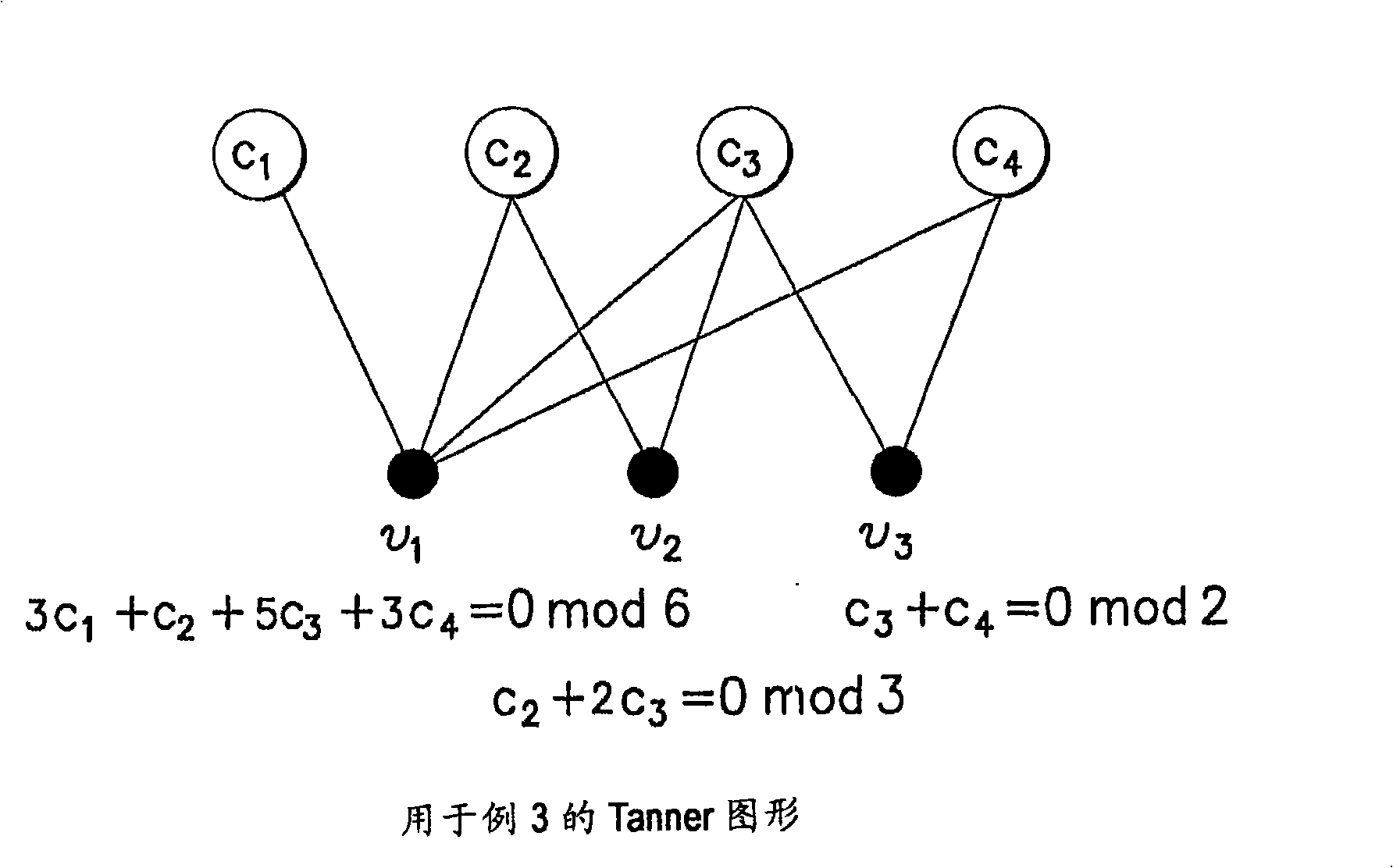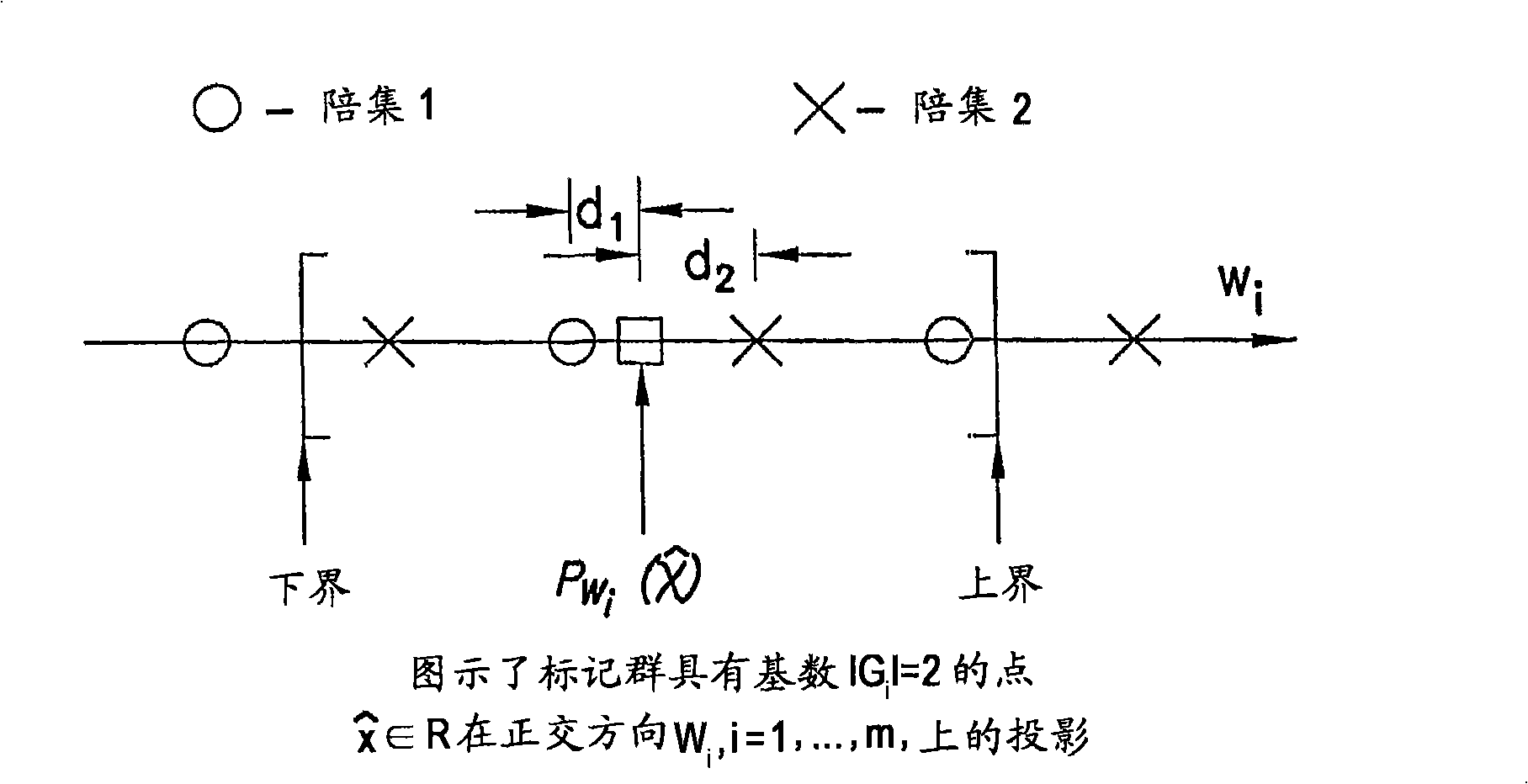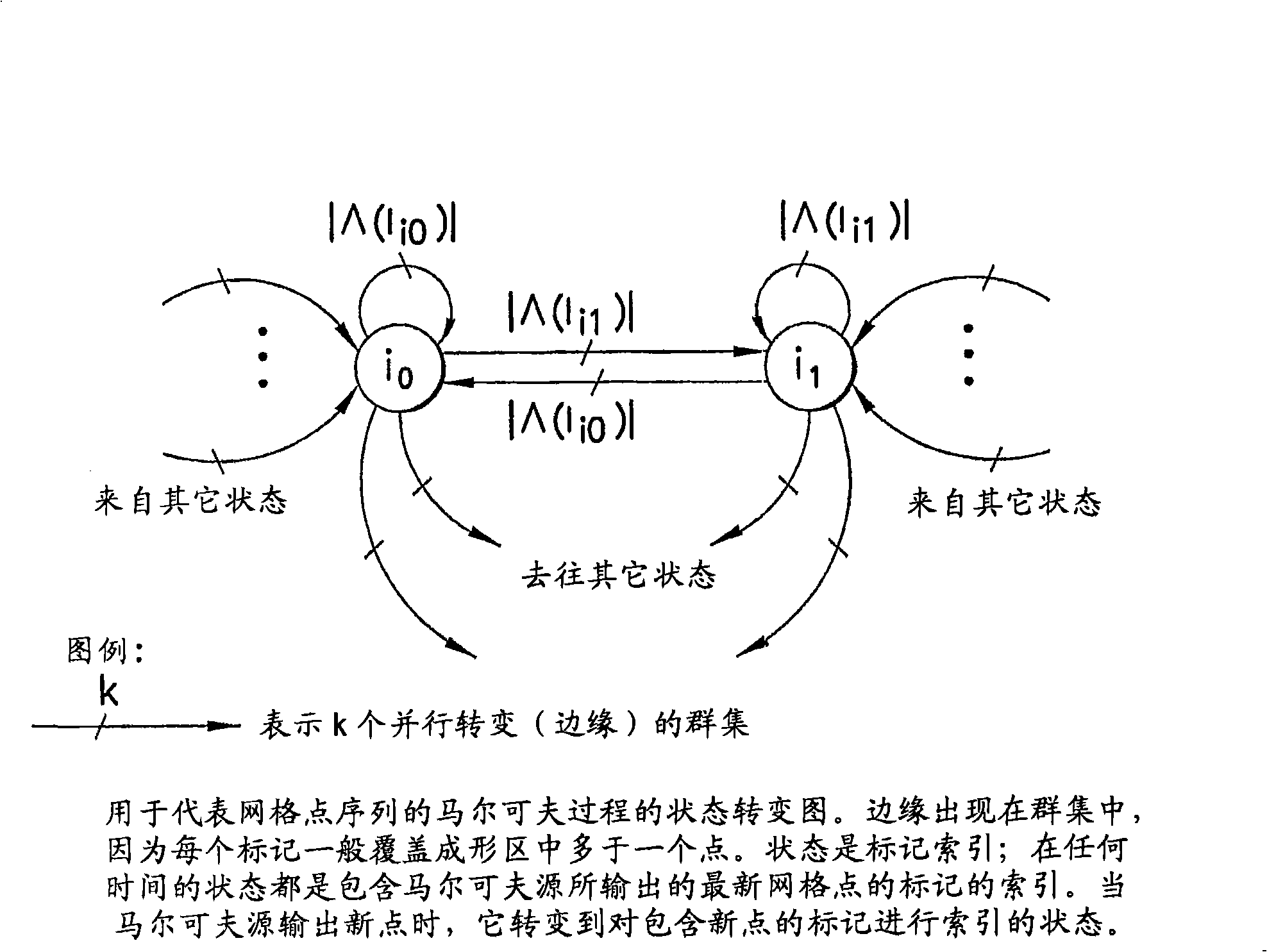Apparatus, method and computer program product providing MIMO receiver
A technology of computer programs and products, applied in the field of multi-input multi-output wireless communication systems, can solve problems such as increasing the complexity of detectors
- Summary
- Abstract
- Description
- Claims
- Application Information
AI Technical Summary
Problems solved by technology
Method used
Image
Examples
example 1
[0092] Example 1: (linear dispersion code) linear dispersion code [27] defines complex vector s=[s 0 ,s 1 ,...,s K-1 ] T to T×N t The mapping of the complex matrix S is as follows:
[0093] S = Σ l = 0 K - 1 ( s l P l + s l H Q l ) - - - ( 7 )
[0094] where {P l} l=0 K-1 , {Q l} l=0 K-1 is T×N t complex matrix. The linear dispersion code can also be rearranged as follows:
[0095]
[0096] in P ~ l ...
example 2
[0106]Example 2: (Hyperorthogonal space-time trellis codes) to construct [23] hyperorthogonal space-time codes by extending the (generalized) orthogonal design [24], which in turn is obtained as Linear combination of expansion coefficient pairs of matrices similar to (7), (8); differs from linear dispersion codes in that the latter matrix verifies additional constraints (see equations (2), (3) of [23]). A code matrix with thirty-two code matrices for T=2, N t =2 and the super-orthogonal space-time construction of the QPSK constellation. The general code matrix S can be expressed as [23] 2 (Footnote 2: The definition of isomorphism I from complex to real vectors (3) differs slightly from [23], where it is defined by interleaving real and imaginary parts; i.e. in [23] in, if but - instead of keeping the real part (and imaginary part) together as implemented in equation (3). As far as section III of [23] is concerned, this is the reason for interchanging the second and thi...
example 3
[0167] Example 3: (Λ=D 4 ) The checkerboard grid in (denoted as D 4 ) has the following generator matrix:
[0168] B = 1 1 1 2 1 0 1 0 0 1 1 0 0 0 1 0 . - - - ( 35 )
[0169] The associated Gram-Schmidt vector is as follows:
...
PUM
 Login to View More
Login to View More Abstract
Description
Claims
Application Information
 Login to View More
Login to View More - R&D
- Intellectual Property
- Life Sciences
- Materials
- Tech Scout
- Unparalleled Data Quality
- Higher Quality Content
- 60% Fewer Hallucinations
Browse by: Latest US Patents, China's latest patents, Technical Efficacy Thesaurus, Application Domain, Technology Topic, Popular Technical Reports.
© 2025 PatSnap. All rights reserved.Legal|Privacy policy|Modern Slavery Act Transparency Statement|Sitemap|About US| Contact US: help@patsnap.com



